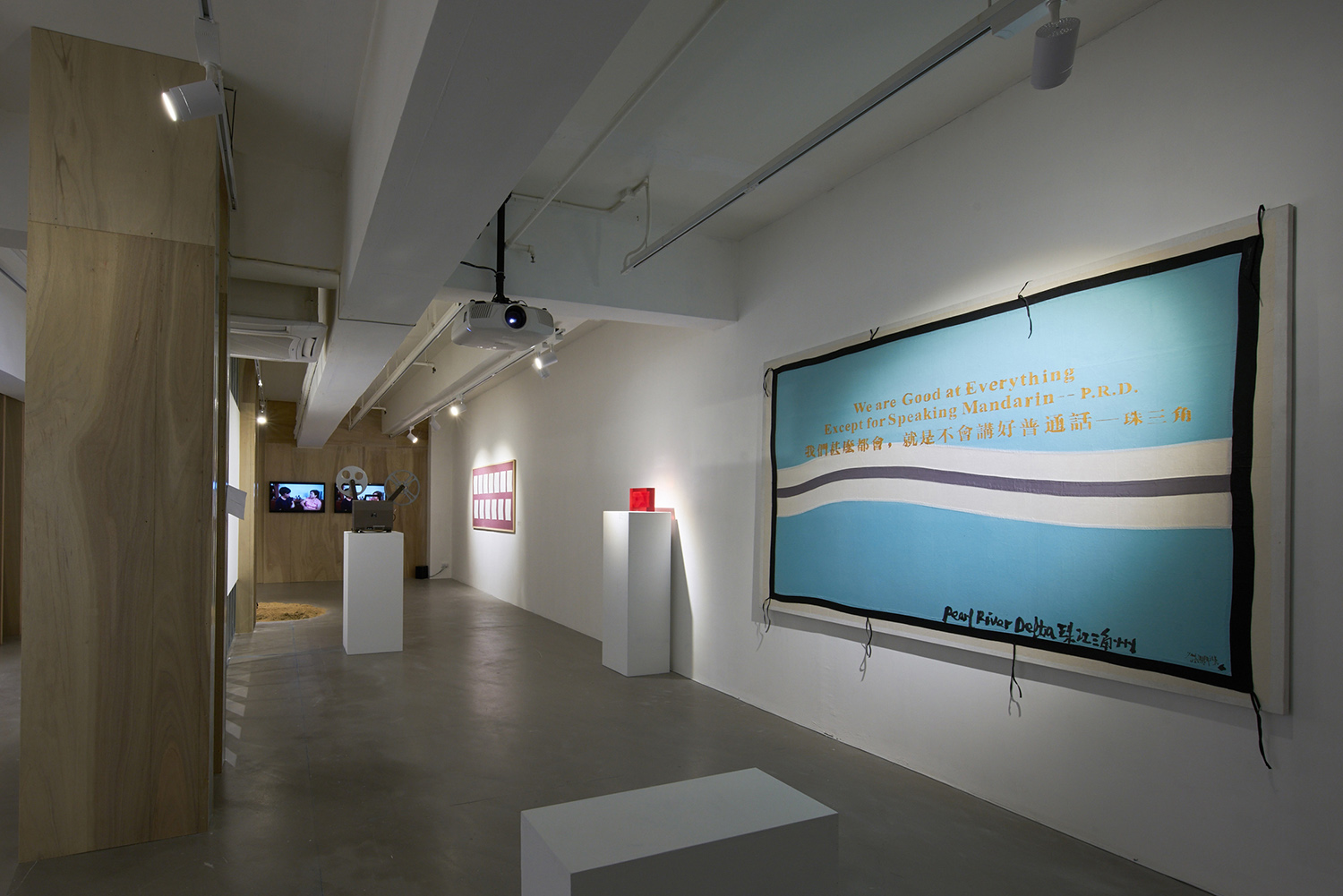Shows
“Kotodama”


One enters Para Site’s “Kotodama”—named after the Japanese term denoting the mystical power of words—to a cacophony of voices. As a native of Hong Kong, which is a melting pot of Chinese peoples, I had the impression of walking into a noisy restaurant filled with people speaking in various languages: Hokkien, Teochew, Hakka, Cantonese. The sonic chaos at the gallery is intentional: curator Andre Chan opted for a spatial design that favored openness over division, with partial white walls that let light and sound travel through. In its careful selection of 17 works by 14 artists, spanning diverse tongues, “Kotodama” ambitiously articulates the spiritual roots of languages, the power dynamics in their exercise, and the beautiful lyricism of vernacular songs.
Many of the first written words were liturgical (Chinese, Sanskrit), prophetic (Quranic Arabic) or ecclesial-theological (Biblical Hebrew). Taiwanese artist Hsu Chia Wei’s two-channel video installation, Spirit-writing (2016), is a vivid reminder of the religious origins of language. In the video, disciples of Marshal Tie Jia, a minor Chinese frog deity, stage a fu-ji spirit-writing ritual in order to reconstruct using 3D animation his ancestral temple in Wuyi mountain, Fujian, China. After each question Hsu asks concerning the construction of the temple, followers of the deity animate a wooden sedan chair in which an idol of Marshal Tie Jia sits, gyrating and swiveling. The protruding arm of the sedan hits the table, leaving powdered marks on the table surface, from which the devotees divulge incredibly detailed answers. The viewer sees from this work that the continuation of any practicing religion is dependent on the performative language of the faithful as a medium.

Just as the pre-modern religious classes’ monopoly on language was a form of power, language remains fundamentally embedded in power structures to this day, mobilized by hegemonic and marginalized cultures alike. Guangdong-born artist Yang Jiechang gleefully flaunts his linguistic inaptitude in a flag, embroidered with the words of its title: We Are Good at Everything Except for Speaking Mandarin – PRD (2005), cheekily signed, “Pearl River Delta (PRD),” a Cantonese-speaking region. Kim Woojin’s single-channel video Memories (2016) similarly details the suppression of various native languages in Taiwan under the Japanese colonial government and later the Kuomintang. The precarious existence of spoken languages relies on the willingness of people to partake in oral traditions for their preservation, which colonizers strategically target in their eradication of indigenous ways of life. This is addressed in Santu’s Song (2018), in which Hong Kong artist Alex Yiu transcribes and vocalizes the titular tune allegedly in the vanished Beothuk language. The song was recorded in 1910, performed by a woman named Santu Toney who identified as a member of the Beothuk indigenous people of Newfoundland, who were believed to have gone extinct in 1829. Santu claimed that she learned the song in her childhood and had since forgotten the meaning of the syllables. The artist highlights the meaninglessness of the lyrics by transliterating them phonetically into a nonsensical Chinese cypher. The sweet yet haunting melody is a melancholic reminder that just as early languages were first codified and transmitted through song, they may persist only in song after their speakers are gone, ending in irretrievable obsolescence.

Not all is lost, however. Susan Hiller’s video Lost and Found (2016), for instance, documents the sound of 23 languages that are extinct, endangered, dormant or revived. Many of these recordings take the form of songs, affirming the centrality of speech as a medium of language. Okui Lala, a Malaysian-Chinese artist, enlisted her family to illustrate how a mother tongue is passed down through generations in Chinese Whisper: 〈天頂一粒星,地下開書齋〉 (2018), a dual-channel video wherein the camera pans sideways as the grandmother, father and the artist, sitting side by side, recite the eponymous Chinese folk song in the Teochew tongue, one after the other, in a looping familial pedagogy.
Encapsulating the linguistic diversity of “Kotodama” was a section created by curator Andre Chan titled "A Cypher," comprising 12 TV screens with corresponding wireless headphones playing hip-hop music videos and performances across cultures, positing hip-hop—by extension, music in general—as a successful, border-transcending strategy for the preservation of local vernacular. As I switched from Palestinian Arabic to Okinawan, from Javanese to Romani, I decided to let go of the discomfort I felt from my incomprehension, and buoyantly danced in silence.

“Kotodama” is on view at Para Site, Hong Kong, until August 26, 2018.







